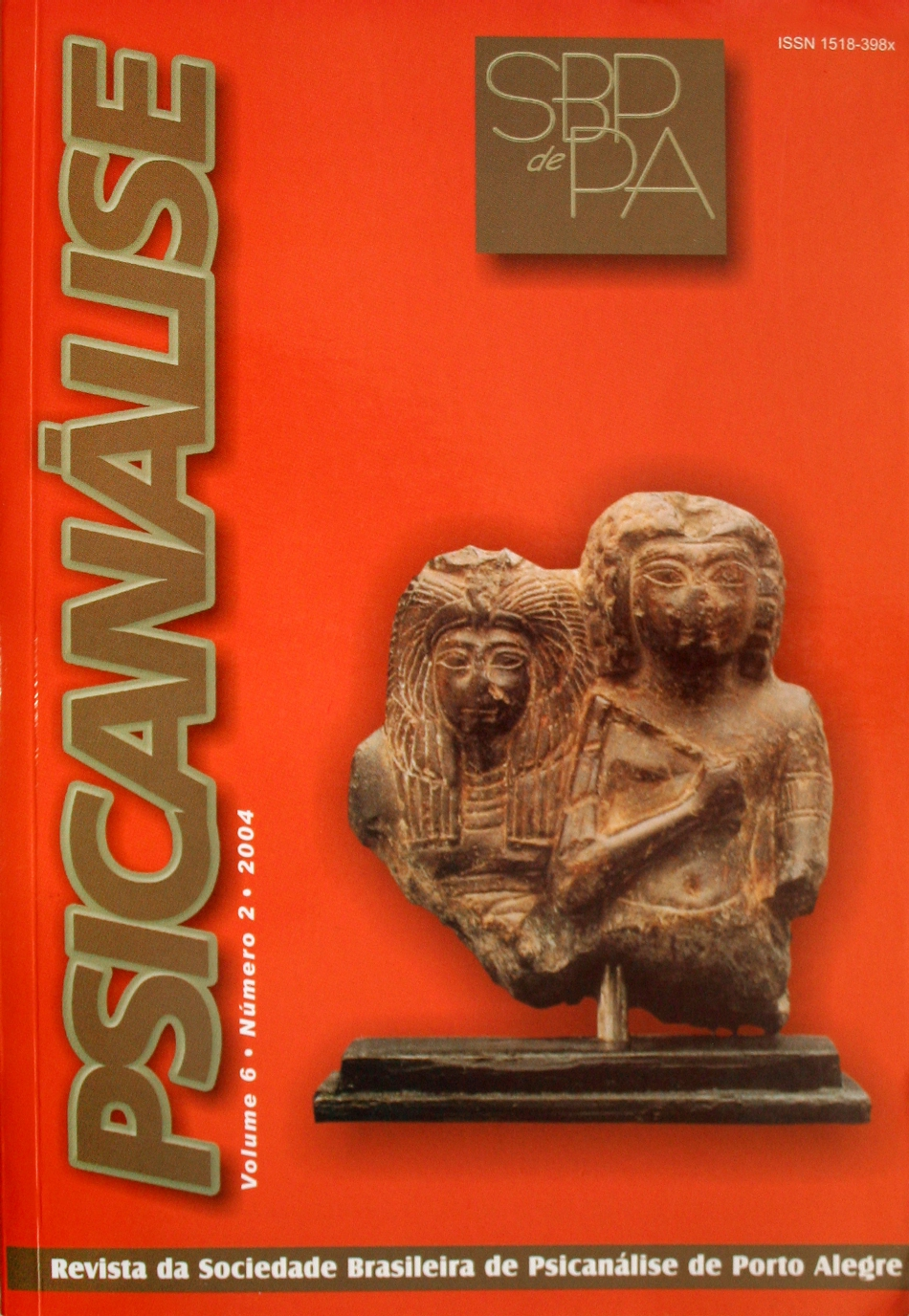The construction of affective links between parents and children
a referential story
DOI:
https://doi.org/10.60106/rsbppa.v6i2.155Keywords:
Continuous links, Circular causality, Parenthood, Identification cuesAbstract
The construction of affective links between parents and children does not limit to interpersonal changes, but it inscribes its protagonists in the universe of senses that surpass and involves the relationship. The self-recognition record is symbolical and it organizes the relationship between individuals by conferring sense to them. The true access to the parenthood is as it follows: the parental function identification, adolescence leaving and adulthood entering. In the era of cloning and narcissistic exaltation, the affective links that bring subjects together and co-construct them are really contemporary issues. If we choose to present the construction of affective links between the childand his parents as a referential story; if, sometimes, we insist on some components,that may seem more technical than poetical, it is in the sense to evidence the complexity of this construction that we could not know how to reduce to a love story; even though love as well as the capacity of loving and being loved are in thecore of this process, as it is in all construction of affective links between human beings.Downloads
References
AUBERT-GODARD, A. (1999) Devenir mère de un enfant à risque. In: DUGNAT, M. (Dir.). Devenir père, devenir mère. Ramonville Saint-Agne: Erès, 1999. p. 83-96.
AULAGNIER, P. C. (1968). La violence de l’interpretation. Paris: PUF, 1968.
______. (1984). L’apprenti historien et le maître sorcier. Paris: PUF, 1984.
BOWLBY, J. (1951). Soins maternels et santé mentale. Genève: OMS, 1951.
______. (1960). L’attachement. Paris: PUF, 1978.
BRAZELTON, B. (1973). Neonatal behavioral assessment scale. London: Heineman, 1973.
CHANGEUX, J. P. (1983). L’homme neuronal. Paris: Fayard, 1983.
CRAMER, B. (1982). La psychiatrie du bebê: une introduction. In: BRAZELTON, T. B.; CRAMER, B.; KREISLER, B.; SCHAPPII, B.; SOULE, M. La dynamique du nourrisson. Paris: ESF, 1982.
DELAISI DE PERCEVAL, G. (1981). La part du père. Paris: Seuil, 1981.
EDELMAN, G. (1992). Biologie de la conscience. Paris: Odile Jacob, 1992.
FERENCZI, S. (1933). Confusion de langues entre les adultes et l’enfant: le langage de la tendresse et de la passion. In: ______. Oeuvres complètes. Paris: Payot, 1982. T. IV, p. 125-135.
HURSTEL, F. (1985). Les changements dans la relation père-nourrison en France: qui sont les pères qui “paternent”? Neuropsychiatrie de l’Enfance et de l’Adolescence, v. 33, p. 85-88, 1985.
HURSTEL, F.; DELAISI DE PERCEVAL, G. (1990). Mon fils, ma bataille. In: DELUMEAU, J.; ROCHE, D. Histoire des pères et de la paternité. Paris: Larousse, 1990.
KONICHECKIS, A. Se construire une père. In: DUGNAT, M. (Dir.). Devenir père, devenir mère. Ramonville Saint-Agne: Erès. 1999. p. 147-156.
HURSTEL, F. (1999). La déchirure paternelle. Paris: PUF, 1999.
KREISSLER, L.; CRAMER, B. (1995). Les bases cliniques de la psychiatrie du nourrisson. In: LEBOVICI, S.; DIATKINE, R.; SOULÉ, M. (Dir.). Nouveau traité de psychiatrie de l’enfant et de l’adolescent. Paris: PUF, 1995. p.1927-1952.
LACAN, J. (1938). Les complexes familiaux dans la formation de l’individu. Paris: Navarin, 1984.
LAPLANCHE, J. (1987). Nouveaux fondements pour la psychanalyse. Paris: PUF,1987.
LEBOVICI, S. L’arbre de vie. (1977). In: CRAMER, B.; CHANSEAU, J. C.; DAYAN, J.; GUEDENEY, A.; LEBOVICI, S., SANDRI, R. Transmettre la vie: mille et un bebés. Ramonville Saint-Agne: Erès. p. 11-40.
LEBOVICI, S. La théorie de l’attachement et la psychanalyse contemporaine. La Psychiatrie de l’Enfant, v. 34, n. 2, p. 309-339. 1991.
MARTY, F. (1999). Filiation, psychose et parricide à l’adolescence: les liens du sang. Ramonville Saint-Agne: Erès, 1999.
MIJOLLA, A. de (1986). Le visiteurs du moi. Paris: Les Belles Lettres, 1986.
ORTIGUES, E. (1990). Entretien avec E. Ortigues. Le Coq-Héron, v. 115, p.58-72, 1990.
ORTIGUES, M. C.; ORTIGUES, E. (1986). Comment se décide une psychothérapie d’enfant? Paris: Denoël, 1986.
RACAMIER, P. D. (1979). De psychanalyse en psychiatrie. Paris: Payot, 1979.
STOLERU, S. La parentification et ses troubles. [S.l.:s.n.,19-?]
STERN, D. (1990). Le monde interpersonnel du nourrisson. Paris: PUF, 1990.
WINNICOTT, D. W. (1956). La préoccupation maternelle primaire. In: ______. De la pédiatrie à la psychanalyse. Paris: PUF; Payot, 1969. p. 285-291.
Downloads
Published
How to Cite
Issue
Section
License
I attribute the copyrights that belong to me, on this work, to SBPdePA, which may use and publish it by the means it deems appropriate, including on the Internet or in any other computer processing.
















